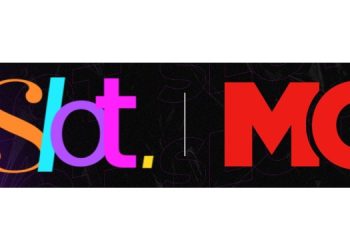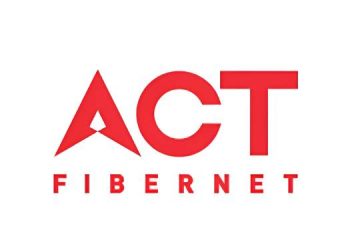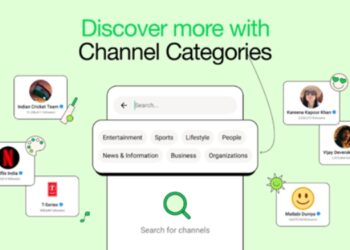A decade back nobody could have guessed that social media platforms would become such an integral part of every successful marketing strategy. They have quickly become an essential part of business strategy across the world to create a meaningful connection with the customer. Social media has enabled brands to reach specific users through a wide range of controls as well as targeting options. In addition to reach, brands can also get real time insights into the audience’s tastes, preferences and profiles which allows them to target relevant users. But is social media the ultimate advertising channel that brands should use or are there other platforms or approaches that brands should consider in addition to social media?
“The fluid nature of social media makes it the perfect launchpad for storytelling, product launches and new initiatives. As we move further towards a new era of e-commerce, it’s clear that social media marketing isn’t just an option anymore, it’s a business-critical operation”[1]. – Julie Meredith, Forbes
To discuss the impact and effectiveness of social media for brands, Pankaj Sharma, Country Head, MGID is joined by Krishnarao Buddha, Senior Category Head – Marketing, Parle Products.
Here are a few excerpts from their discussion.
Pankaj Sharma: How has communication on social media evolved with time?
Krishnarao Buddha: There is no denying that the influence and power of social media is immense. For an individual it has become very easy to initiate and maintain communication with people throughout the world. Technological evolution has brought communication from texts to videos. From the perspective of a brand, social media has become the go-to platform to grow the business and create an online reputation.
Social media has proven to be a powerful tool that has enabled brands to influence and create an outlook on how they present themselves and their products. It is a graceful amalgamation of marketing and sales, which has made a two-way communication between the brand and its target audience possible as well as seamless.Today, when brands launch a communication or a campaign on social platforms they can get instant feedback, real time data about interactions from users and other metrics such as views, reach, shares, engagement etc. The advent of technology today is surging through all spheres of life, and social media marketing is not just useful to build social community but to also to humanize the brand.
Pankaj Sharma: How to leverage social media to maximize brand growth? What are the important KPIs for a brand?
Krishnarao Buddha: The best thing about social media is that you can customize the campaign as per your requirements i.e., you can pick the exact geographic region, language, audience persona etc. for your campaign. This makes the campaign more effective, and the brand does not end up paying for impressions that were essentially ineffective. The top KPIs that campaign managers should consider include engagement metrics such as likes, shares, comments, growth in the number of followers of the brand’s page, traffic on the social page, reach of campaign, social sentiment and social visitor goals. For every campaign, the objective needs to be clearly defined and the KPIs would follow accordingly. To illustrate, if a brand is running a social campaign to launch a new product, then the main KPIs to measure would be reach, engagement and conversions.
Some strategies to maximize the brand growth should be:
Ensuring brand’s presence across multiple social media platforms. This helps in amplifying the reach of the brand and target audience across geographies and demographic profiles.
Make use of platform insights to understand the audience. These insights can be helpful in defining the marketing strategy of the brand to make it more effective, design the right communication and analyze what worked for the brand in the past.
Engage users through meaningful content that connects with them. The ultimate goal of every brand is to make a sale, but outright and in-the face communication might cause users to lose interest. Visually appealing creatives and content that connects emotionally would show better results.
Since social media allows two-way communication with the audience, it is important for the brand to respond quickly to them. A survey by Sprout Social found that brand actions and responsiveness on social media prompts users to make a purchase. About 83% users stated that they want brands to respond to them on social media[2].
Include paid promotions for your campaigns and do not rely solely on organic reach. This also includes influencer marketing in the overall strategy since this is a compelling way to reach out to new markets and demographics.
Pankaj Sharma: What are the most engaging formats used by brands on these platforms?
Krishnarao Buddha: Over the years, formats used by brands have evolved and transformed, especially as the behaviour of the online users keep changing. Today, video is one of the most influential formats for achieving social goals. According to Wyzowl’s 2021 State of Video Marketing Survey, an overwhelming majority of video marketers have said that videos helped increase sales, traffic to their websites and users’ understanding of their product or service[3].
After videos, static images on social media have seen a lot of success. Brands such as Airbnb and Apple make use of visually appealing images across social platforms to influence the users. The reason behind the success of images is considered to be the fact that users would rather see a picture than read a thousand words. Images and static creatives have also encouraged UGC on social media.
Text-based posts and stories are formats that drive engagement and are best used to mobilize or activate a community that the brand is targeting.
Lastly, live video as a format, is something that platforms are experimenting with. Brands have found it useful to create micro and macro virtual events involving celebrities and influencers to give users a feeling of togetherness and community.
Pankaj Sharma: How effective is social media for brand campaigns or are there other channels that can be utilized?
Krishnarao Budhha: As per data collated by GWI, by the end of 2020, 98% of consumers globally said they’d visited at least one social network in one month. Jumping on these statistics, social media ad spends increased by almost 50% in a single year which led to ad saturation in social network feeds. In such a scenario it is very important for a brand to stand out, especially because 49% of internet users have said that they’re likely to buy brands that they see advertised.[4]
Social media ads succeed at being personalized and entertaining, but they lack being informative, helpful and relevant as compared to other ad approaches like native advertising[5]. An ad perceived as disruptive, excessive or irrelevant can be detrimental to a brand’s image as well as can the ads that are placed next to inappropriate content. This is why along with social media native ads also need to be a part of the marketing strategy for brands.
Pankaj Sharma: Can advertisers gain high-quality leads with social media?
Krishnarao Buddha: Social media lead generation campaigns have shown positive results and there are certain ways to generate good quality leads such as sharing links to gated content, running contests on social media platforms, organizing webinars and using geo-targeted search campaigns. However, approaches such as native advertising have also shown good results, mostly because they are better received by the target audience. This approach helps combat ad fatigue and engages the user in meaningful content at every stage of the user funnel.
Pankaj Sharma: What do you think about these new-age social platforms?
Krishnarao Buddha: The number, as well as a variety of social media platforms available to people and brands alike, has increased tremendously. In 2021, the latest trend is an audio-based social networking and it seems like this trend is here to stay. Some new-age social platforms to watch out for include Clubhouse, Twitter spaces, Caffeine, Instagram reels and House Party. Each platform has found acceptance across generations with millennials leading the trend. For a brand, observing the growth of young and promising social channels will help determine which ones are worth joining, investing time and putting effort in to cultivate a community. Being a part of the platform from its early stages would give brands time to understand what type of content works and which are the best strategies to engage users. This will put them ahead of competitors that launch their accounts later and might struggle with getting insights about the platform.
About the Guest:
Krishnarao S Buddha is a Senior Category Head at Parle Products Pvt Ltd. With over 26 years of experience in the FMCG industry, he oversees Parle’s entire snacks, confectionery, cakes, and rusk portfolio. In his present capacity, Krishnarao is responsible for category building, leading effective teams while streamlining operations and marketing strategies with an objective of enhancing Parle’s market share and exceeding the brand’s revenue and profitability.
With a keen interest in advertising, media management, and building brand equity, he has been closely working across teams to constantly drive need-gap identification and spearhead new product launches for the legacy brand. He was awarded the ‘Pitch CMO Award 2021’ a flagship property of the exchange4media Group which was presented by Mirror NOW.
[1]https://www.forbes.com/sites/forbescommunicationscouncil/2020/06/25/the-power-of-social-media-to-capture-todays-consumer/?sh=35322c06789e
[2]https://grin.co/blog/5-ways-for-leveraging-social-media-to-drive-results-for-your-business/
[3]https://sproutsocial.com/insights/types-of-social-media-content/
[4]https://blog.gwi.com/trends/ads-on-social-media/
[5]https://blog.gwi.com/trends/ads-on-social-media/
















